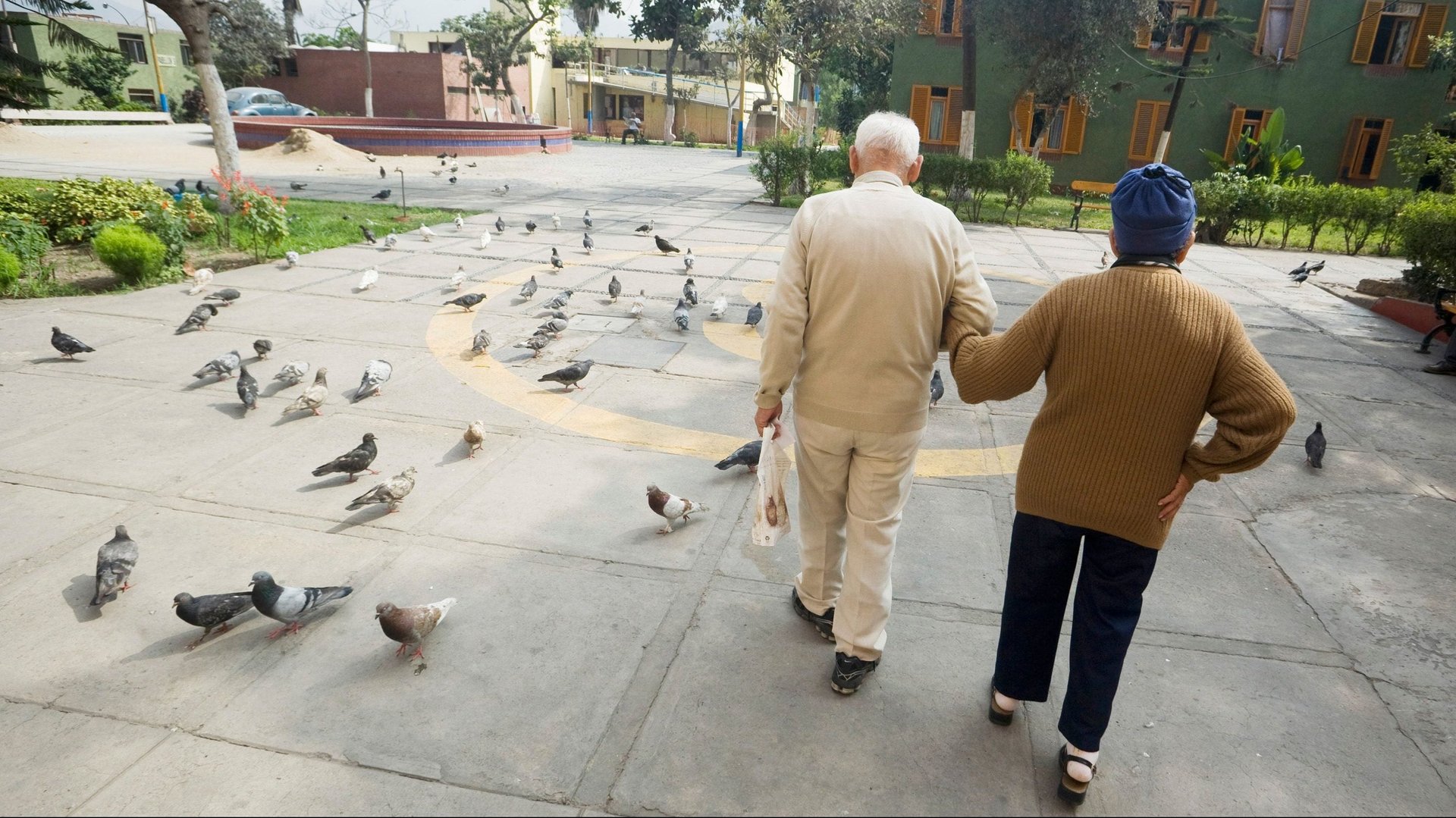Global aging populations mean that dementia rates are about to skyrocket
The 50 million people currently living with dementia make up about 0.7% of the population. By 2050, the proportion of people living with dementia is predicted to double, up to about 1.4% of the population. That ratio translates to some 131.5 million people worldwide.


The 50 million people currently living with dementia make up about 0.7% of the population. By 2050, the proportion of people living with dementia is predicted to double, up to about 1.4% of the population. That ratio translates to some 131.5 million people worldwide.
These data were compiled by Maëlenn Guerchet and Martin Prince, two epidemiologists working at Kings College London, in conjunction with the Alzheimer’s Disease International, a nonprofit group based in the UK. They classified low-, middle-, and high-income countries according to the World Bank’s criteria, which relies on gross national income per capita.
As low- and middle-income countries are becoming wealthier, they’re experiencing fewer deaths and longer life expectancies. “This demographic transition is more advanced in high-income countries,” Guerchet explained in an email. “The speed of population aging is faster in low- and middle-income countries than in high-income countries.” China, India, and other countries in southeast Asia have the most rapidly growing older populations.
Dementia is a catch-all term for the symptoms of atypical, rapid cognitive decline. There are several causes of dementia, including vascular disease, Lewy Body disease, Huntington’s disease, Parkinson’s disease, and Alzheimer’s disease. The latter accounts for up to 80% of all forms of dementia, and is a slow-growing neurodegenerative disease that has remained largely untreatable. Although there are some drugs that have slowed Alzheimer’s progression, no new ones have come to the market in over a decade, and the disease is still fatal.